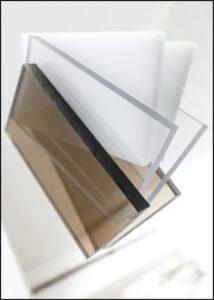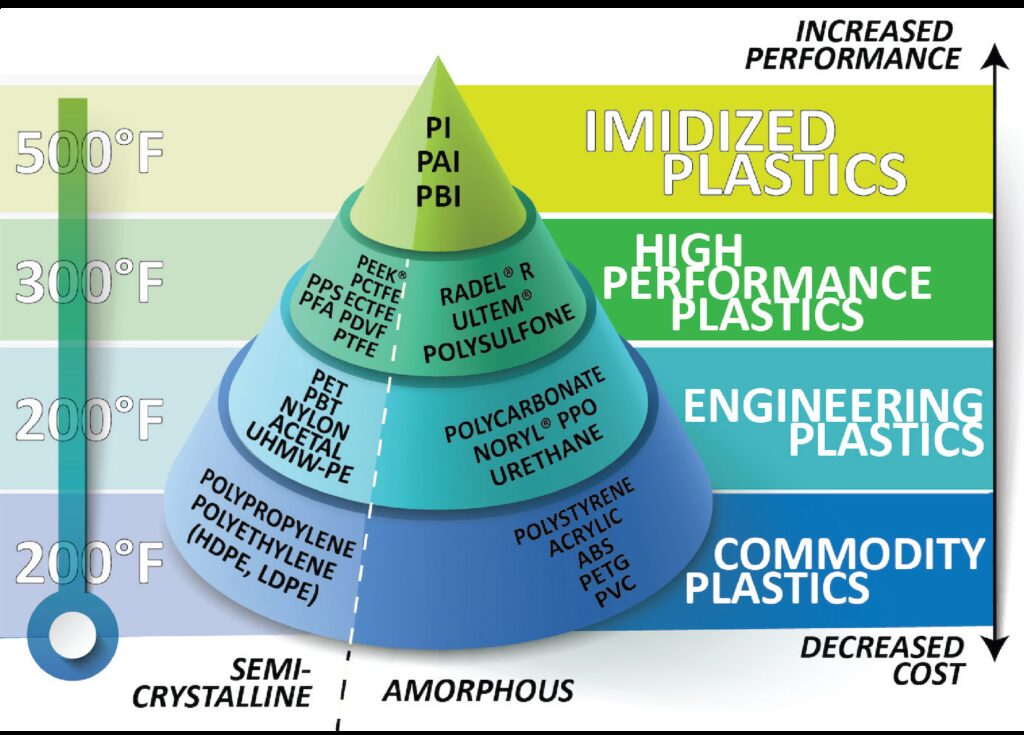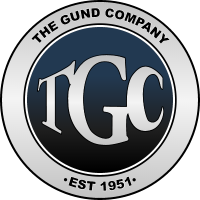Thermoplastic Materials
THERMOPLASTIC MATERIALS
THERMOPLASTIC IS A TYPE OF PLASTIC THAT IS MADE UP OF POLYMER RESINS, WHICH BECOMES SOFT AS THE MATERIAL IS HEATED AND HARD AS IT IS COOLED. THESE MATERIALS DO NOT SHOW ANY CHEMICAL PROPERTY CHANGES WHEN HEATED OR COOLED MULTIPLE TIMES. THUS, MAKING THEM MORE SUITABLE FOR RECYCLING.
Thermoplastic materials can be homogenous and heterogeneous in their makeup. Unique properties can be achieved by blending thermoplastics, co-extruding thermoplastics or even including special property-enhancing additives.
Thermoplastic can be manufactured and fabricated using several standard methods. Most thermoplastic sheet and film are produced using an extrusion process. However, cast methods can also produce some sheet thermoplastic materials, as well. Nearly any thermoplastic sheet material can be formed using thermoforming, vacuum forming or cold forming methods. Not only that, but thermoplastics with or without reinforcement can also be injection molded into complicated shapes, specifically with features that are not achievable through standard machining. All thermoplastic is often processed similarly. Although, performance characteristics, workability, and cost can vary greatly.
Thermoplastic materials are suitable for numerous applications and are most commonly utilized in the following industries:
- Aerospace
- Defense
- Medical
- Satellite Communications
- Food Service
- Electronics

AMORPHOUS VS. SEMI-CRYSTALLINE
Thermoplastics can be broken into two groups by composition: Amorphous and Semi-Crystalline.
While the molecules in semi-crystalline polymers are clustered and structured in a region, the molecules in amorphous polymers are randomly arranged.
AMORPHOUS:
- Easy to thermoform
- Typically translucent
- Softens over a range of temperatures
- Bonds well using adhesives
- Good for structural applications
- Poor fatigue resistance
- Not ideal for wear applications
- Subject to cracking from stress
SEMI-CRYSTALLINE:
- Challenging to thermoform
- Typically opaque
- Sharp melting point
- Difficult to bond
- Good for structural applications
- Good fatigue resistance
- Good for wear & bearing applications
- Good resistance to cracking from stress
AMORPHOUS THERMOPLASTICS:
Amorphous thermoplastics are more conducive to thermoforming. They soften over a range of temperatures and have better bonding ability when combined with adhesives.
Amorphous plastics often have better dimensional stability and impact resistance, when compared to semi-crystalline thermoplastics of a similar grade. However, stress makes amorphous plastics more prone to fatigue and cracking.
SEMI-CRYSTALLINE THERMOPLASTICS:
Semi-Crystalline thermoplastics are excellent for wear and structural applications.
Compared to amorphous thermoplastics, semi-crystalline thermoplastics tend to have better chemical resistance, electrical properties and a lower coefficient of friction. However, semi-crystalline plastics are challenging to thermoform, difficult to bond, have a sharp melting point and, additionally, have low impact strength.
PLASTIC FAMILIES:
Thermoplastic Materials can be further categorized into families, particularly by temperature rating.
Each family contains amorphous and semi-crystalline plastics with distinct advantages and disadvantages, depending on what is trying to be achieved.

COMMODITY THERMOPLASTICS:
AT THE BOTTOM OF THE PYRAMID, COST-EFFECTIVE COMMODITY PLASTICS – SUCH AS PP, PE, PVC, PS AND PET POLYMERS – ARE MAINLY UTILIZED IF EXCEPTIONAL PROPERTIES ARE NOT NECESSARY.
These plastics do not require highly-engineered properties and are produced at larger volumes, in order to support many everyday applications.
The operating temperature of these materials is lower, ultimately meaning that they are less resistant to heat. These plastics are generally weaker than higher-performing plastics. In addition to that, these thermoplastics offer moderate mechanical properties. Although, there is variability between commodity plastics, this type of thermoplastic is, by far, the most common plastic that is currently being used worldwide.
APPLICATIONS:
- Textiles
- Automotive
- Toys
- Containers
- Electronics
- Construction
- Housewares
| Commodity Thermoplastics | ||||||
|---|---|---|---|---|---|---|
| Description | Test Method | Units | pp | PETG | HDPE | ABS |
Specific Gravity | ASTM D792 | — | 0.905 | 1.27 | 0.95 | 1.04 |
Water Absorption | ASTM D570 | % | <0.01 | 0.2 | <0.01 | 1 |
Hardness, Rockwell | ASTM D785 | — | 92 | 115 | 69 | 105 |
Tensile Strength | ASTM D638 | psi | 4800 | 7700 | 4800 | 6000 |
Elongation at Break | ASTM D638 | % | 12 | 18 | 900 | 150 |
Flexural Modulus | ASTM D790 | ksi | 180 | 310 | 200 | 340 |
Flexural Yield Strength | ASTM D790 | psi | 7000 | 11200 | — | 10000 |
Compressive Modulus | ASTM D695 | ksi | — | 320 | — | — |
Impact Strength | ASTM D256 | ft-Ib/in | 1.9 | 1.7 | 3 | 2.5 |
Dielectric Constant | ASTM D150 | — | 2.25 | 2.6 | 2.3 | 2.7 |
Dielectric Strength | ASTM D149 | kV/m | 660 | 410 | 900 | 500 |
Dissipation Factor | D150 | — | 0.001 | 0.005 | 0.0002 | 0.01 |
Coefficient of Thermal Expansior | D696 | x10^-5in./in/F* | 6.2 | 3.8 | 6 | 5 |
Heat Deflection Temp | D648 | F | 210 | 163 | 170 | 198 |
Glass Transition Temp | D3418 | F | 327 | 180 | 260 | 221 |
Max Operating Temp | — | F | 180 | 150 | 180 | 176 |
Thermal Conductivity | AST F433 | BTU-in/hr-ft^2-F | 0.8 | 2 | 2.92 | 1.73 |
| Other Commodity Thermoplastic Materials include | ||
|---|---|---|
| PolyPro FR® | Formex® | |
| Vivak® | ||
Contact Us Today to learn more about commodity thermoplastic materials from The Gund Company or request a quote for your application!
ENGINEERING THERMOPLASTICS
ALTHOUGH THEY SHARE MANY SIMILARITIES WITH COMMODITY THERMOPLASTICS, ENGINEERING THERMOPLASTICS ARE DESIGNED FOR ENVIRONMENTS THAT REQUIRE HIGHER STRENGTH, TEMPERATURE RESISTANCE, AND DURABILITY, AMONG OTHERS.
Common engineering plastics include polycarbonate, nylon (PA), acetal (POM), and UHMW-PE.
Variation in characteristics between these materials does exist, but in general, they are all used in environments unsuitable for commodity thermoplastics. Engineering thermoplastics are generally more expensive than commodity thermoplastics, but both are relatively inexpensive.
APPLICATIONS:
- Bearings, Springs, Valves
- Automotive
- Medical/Healthcare
- Textiles
- Electronics
- Cookware
Engineered Thermoplastic | ||||||
|---|---|---|---|---|---|---|
| Description | Test Method | Units | pC | Nylon | Acetal | UHMW |
Specific Gravity | ASTM D792 | — | 1.2 | 1.15 | 1.41 | 0.93 |
Water Absorption | ASTM D570 | % | 0.15 | 0.3 | 0.2 | <.01 |
Hardness, Rockwell | ASTM D785 | — | 118 | 115 | 120 | 66 |
Tensile Strength | ASTM D638 | psi | 9000 | 11500 | 9500 | 3100 |
Elongation at Break | ASTM D638 | % | 110 | 50 | 30 | 30 |
Flexural Modulus | ASTM D790 | ksi | 345 | 450 | 400 | 125 |
Flexural Yield Strength | ASTM D790 | psi | 13500 | 15000 | 12000 | — |
Compressive Modulus | ASTM D695 | ksi | 345 | 420 | 400 | — |
Impact Strength | ASTM D256 | ft-Ib/in | 18 | 0.6 | 1 | N/A |
Dielectric Constant | ASTM D150 | — | 2.96 | 3.6 | 3.8 | 2.3 |
Dielectric Strength | ASTM D149 | kV/m | 380 | 15.7 | 420 | 900 |
Dissipation Factor | D150 | — | 0.0009 | 0.02 | 0.005 | 0.00002 |
Coefficient of Thermal Expansior | D696 | x10^-5in./in/F* | 0.375 | 5.5 | 5.4 | 11 |
Heat Deflection Temp | D648 | F | 280 | 200 | 220 | 95 |
Glass Transition Temp | D3418 | F | 310 | 500 | 335 | 280 |
Max Operating Temp | — | F | 300 | 210 | 180 | 180 |
Thermal Conductivity | AST F433 | BTU-in/hr-ft^2-F | 1.35 | 1.7 | 1.6 | 2.92 |
| Other Engineered Thermoplastic Materials include | ||
|---|---|---|
| Zytel® | Lexan® | |
| Valox® | Mylar® | |
| Statex® | Delrin® | |
Contact Us Today to learn more about engineering thermoplastic materials from The Gund Company. Request a quote for your application.
HIGH PERFORMANCE AND IMIDIZED
HIGH-PERFORMANCE PLASTICS AND IMIDIZED PLASTICS MAY BE NECESSARY FOR MORE DEMANDING OR SPECIALIZED APPLICATIONS.
High-performance plastics such as PEEK, PTFE, and PSS can withstand very high temperatures and offer excellent chemical resistance.
Imidized plastics are often suited more for aerospace applications but can also be used for thermal insulators, high-performance bearings, and electrical connectors in extreme environments. Imidized plastics such as polyamide-imide (PAI), polybenzimidazole (PBI), and polyimide (PI) feature the highest temperature resistance and load-bearing capabilities, among other properties.
APPLICATIONS:
- Aerospace
- Insulation
- Wear Components
- Electronics
- Food Service
- Medical
| Imidized Plastics | High Performance Plastics | |||||||
| Description | Test Method | Units | PI | PAI | PBI | PEEK | PTFE | Ultem |
Specific Gravity | ASTM D792 | — | 1.43 | 1.41 | 1.3 | 1.31 | 2.16 | 1.28 |
Water Absorption | ASTM D570 | % | 0.24 | 0.4 | 0.4 | 0.1 | <0.01 | 0.25 |
Hardness, Rockwell | ASTM D785 | — | 50 | 80 | 125 | 103 | 50 | 112 |
Tensile Strength | ASTM D638 | psi | 12500 | 18000 | 20000 | 16000 | 3900 | 16500 |
Elongation at Break | ASTM D638 | % | 7.5 | 10 | 3 | 20 | 300 | 80 |
Flexural Modulus | ASTM D790 | ksi | 450 | 600 | 950 | 600 | 72 | 500 |
Flexural Yield Strength | ASTM D790 | psi | 16000 | 24000 | 32000 | 25000 | N/A | 20000 |
Compressive Modulus | ASTM D695 | ksi | 350 | 700 | 900 | 500 | 3.5 | 480 |
Impact Strength | ASTM D256 | ft-Ib/in | 3.76 | 2 | 0.5 | 1 | 3.5 | 0.5 |
Dielectric Constant | ASTM D150 | — | 3.55 | 4.2 | 3.2 | 3.3 | 2.1 | 3.15 |
Dielectric Strength | ASTM D149 | kV/m | 559 | 580 | 550 | 480 | 285 | 830 |
Dissipation Factor | D150 | — | — | 0.026 | 0.003 | 0.003 | <0.0002 | 0.0013 |
Coefficient of Thermal Expansior | D696 | x10^-5in./in/F* | 3 | 1.7 | 0.13 | 2.6 | 7.5 | 3.1 |
Heat Deflection Temp | D648 | F | — | 532 | 800 | 320 | 132 | 392 |
Glass Transition Temp | D3418 | F | 754 | 527 | 750 | 644 | 635 | 419 |
Max Operating Temp | — | F | 466 | 500 | 700 | 480 | 500 | 340 |
Thermal Conductivity | AST F433 | BTU-in/hr-ft^2-F | — | 3.7 | 2.8 | 1.75 | 1.7 | 0.9 |
| Other Materials include | ||
|---|---|---|
| Torlon® | Udel® | |
| Teflon® | Kynar® | |
| Vespel® | Radel® | |
| PEEK® | Rulon® | |
Contact Us Today to learn more about high-performance or imidized thermoplastic materials from The Gund Company, or to request a quote for your application!

